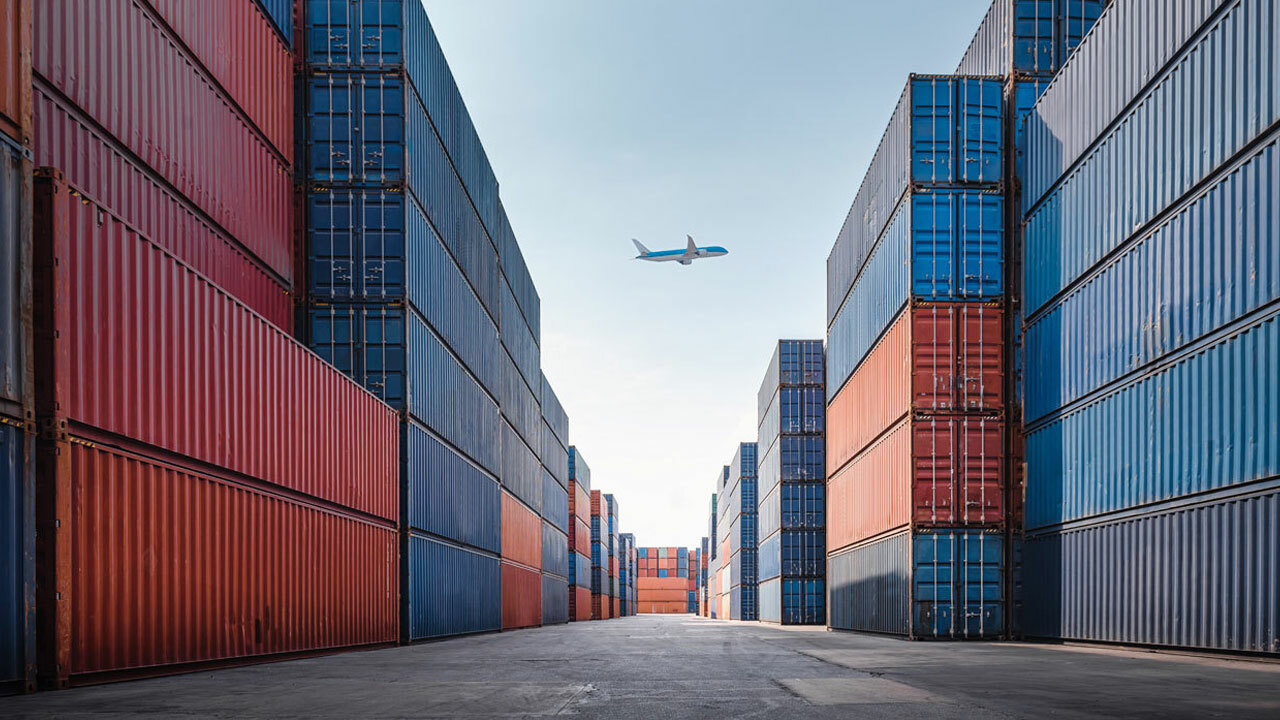A longtime leader in healthcare improvement, we’re developing new ways to revolutionize the industry.

Report: The Current State of Healthcare Supply Chain Disruptions

Empty store shelves, longer lead times and higher prices ─ this is the reality the world is facing when it comes to the global supply chain post COVID-19. Supply chain disruptions spiked 67 percent in 2020, with the pandemic having a dramatic impact across every industry, including healthcare.
A wide spectrum of supply chain disruptions emerged over the last 19 months, from raw materials, labor and manufacturing, to shipping, transportation, warehousing, distribution, and “last-mile” delivery. Today, we’re still experiencing a broad array of global, macro-level issues that, layered together, create bottlenecks in a system not designed for such demands.
In helping tackle these challenges, we must first diagnose the root causes and understand the full picture.
For our part, Premier has been concerned about supply chain risk management for years and we’ve built forward-thinking capabilities to help protect the supply chain in times of disruption – which is why our members fared better during COVID-19 than most others.
First, here’s a run-down on the current state of global supply disruptions:
- Record U.S. port congestion due to massive consumer goods demand, exacerbated by seasonal purchasing trends
- Record freight and transportation costs coupled with global shipping container imbalances
- Increased pricing and lack of raw materials availability for manufacturers, including semiconductors and plastic resins
- Emerging domestic and international natural disasters
- Ongoing national labor challenges across industries, which is making it harder to find long-haul drivers and staffing at ports and warehouses
- The continuing energy crisis in China, which is disrupting manufacturing in several industries; we’re also reviewing similar energy-related reports coming from India
Premier’s supply chain experts remain acutely aware of each of these existing challenges as well as new and emerging issues. While these converging issues impact consumer goods across the globe, the healthcare supply chain also feels the effects.
Demand for Products is Through the Roof
As a result of the massive demand surge for goods in America, offshore manufacturers have been under pressure to produce products at a faster rate. With a return to normal operations post lockdowns, there are now more goods in containers coming to the U.S. from Asia than there are empty containers returning for refill.
This is ultimately contributing to a wide imbalance within the seaport shipping and receiving ecosystem. As a result, there are more items imported into the U.S. than can be unloaded and distributed across the supply chain distribution network.
Understanding Port Congestion Challenges
Shipping via air can easily cost 10X as much as shipping via sea and there is significantly less space. As such, the majority of U.S.-imported goods arrive in forty-foot equivalent units (FEU’s, or containers), which are loaded on cargo vessels with anywhere between 9,000 and 14,000 FEUs each. Once cargo vessels arrive, they dock at one of the U.S. ports that can accommodate ships of that size, such as Los Angeles, Long Beach, Savannah, Charleston and NY-NJ.
In addition to the record volumes of imports coming from Asia, there are several other contributing factors to ongoing port congestion:
- Distribution limitations of essential cargo-handling equipment. In addition to chassis (trailers that carry containers) shortages, the additional infrastructure needed to offload containers is limited.
- Container ships vast size limits where they can dock. Cargo vessels often require ports and water channels large enough to accommodate their large size, which limits the number of ports that can accommodate them. According to international trade statistics, 40 percent of all cargo that comes to the U.S. is routed through the ports of LA and Long Beach. This contributes to more congestion and delays, which ultimately can lead to higher costs and missed deadlines.
- Ongoing labor shortages, including truck drivers and warehouse workers needed to accommodate the distribution of containers. The high volume of goods, coupled with labor shortages, prevents goods from continuously flowing downstream, and causes backups at facilities along the way to their final destination.
- Peak holiday shopping season, which generally lasts from August to mid-October. During this period, demand is higher, supply is lower, prices go up and container capacity can become even more scarce.
Impact on the Healthcare Supply Chain
Alongside commodity goods for the entire economy, healthcare supplies are also included in imported containers, though it’s difficult to assess the exact quantities and types without visibility into detailed shipping data.
Globally, medical device manufacturing and distribution are treated as critical, meaning these goods are prioritized so that the production of and flow to the U.S. can continue as uninterrupted as possible. However, we’re seeing current challenges play out our own ports, where once the containers arrive, they’re in the same queue as other goods coming in, regardless of type.
Container loading and offloading are also very deliberate. Goods are first loaded onto vessels based on their destination ports, and then also by weight distribution. Because this is a commodity service, there is no prioritization of what types of goods are offloaded first, and no ability to pay a premium cost to deliver certain types of goods over others.
What We Can Do
Providers should consider ordering early and rethinking inventory management strategies as product lead times – the timeline between placing an order and receiving it – have increased significantly. Via the Journal of Online Commerce (JOC), average lead times for consumer goods routed from Shanghai to Los Angeles and on to Chicago have increased from 30-35 days to 80+ days as of late.
In addition, and alongside the Strategic National Stockpile (SNS), health systems should maintain judicious PPE conservation and stockpiling strategies to help keep supply levels maintained until after port congestion challenges begin to ease in 2022.
At Premier, we’re continuously assessing medical categories that:
- Have largely not been stockpiled;
- Are not included the SNS;
- Are critical to patient care and experiencing potential disruptions due to transportation issues.
We’re also continuing to analyze products concentrated with one or two suppliers or concentrated in a certain geographic location. Examples of these categories:
- Standard and safety hypodermics
- Tape products
- Transparent dressings
- Sterilization wraps
- Temperature monitoring products
- Laboratory specimen collection
Premier is also paying close attention to pricing increases. The Freightos Baltic Index reported that in September, container shipping costs from Asia to the U.S. West Coast were up more than $20,000 per FEU ─ a 499% increase from the same time in 2020.
Premier remains steadfast in our commitment and partnership with members to improve supply chain resiliency and help mitigate disruptions:
- Together with our members, we’re changing the way we source critical products and bringing production back to the U.S. – thus helping to eliminate overreliance on oversees manufacturing and port congestion. Through collaborations with Prestige Ameritech, DeRoyal Industries Inc, Honeywell and Exela Pharma Sciences, we’re producing millions of domestically made PPE and pharmaceutical products.
- We’ve expanded our partnership with Resilinc to include supplier mapping, risk scoring and AI-enabled data intelligence that allows providers to quantify risk and help mitigate disruptions. Premier also requires risk assessment in contracting, including data on where product and raw materials are sourced, safety stock requirements, data on safety records and rapid replenishment capabilities.
- Our direct sourcing arm works directly with manufacturers to increase production of necessary medical supplies in the U.S. and globally. This division can also execute forward buys. As the backbone for our PPE forward buy program, S2S Global delivered more than 166 million masks and respirators and 66 million gowns during the height of the pandemic, and continues to serve as a supplemental source of supply today.
- Stockd, Premier’s online marketplace, serves as a vital, 24/7 platform to access PPE and other healthcare supplies that are vetted for high-quality and fair pricing.
- Premier created ProvideGx, the industry’s only comprehensive, multi-faceted drug shortage program, for dedicated sources of supply and with 4–6 month safety stock required.
- PINC AI’s Crisis Forecasting and Planning Tool enables providers to predict surge, prioritize supply and adjust therapies for COVID-19 patients. This tool could predict a hospital's COVID-19 census based on cases at the county level; model supply levels based on estimated case volume and typical surge demand; and show inventory availability by supplier. Throughout the pandemic, this has allowed providers to anticipate their needs for PPE along with other products and therapeutics necessary for treating patients.
- We’re building interconnected digital supply networks that can anticipate and respond to future shocks and minimize their impact, as well as automate manual processes. Outside of the pandemic, PINC AI technology is giving providers a leg up to thrive in today’s healthcare environment – enabling members to more accurately manage contracts, automate invoicing and payments, streamline operations and manage supply chain costs all in one place.
Even as COVID-19 exposed supply chain flaws and transformed the healthcare landscape, together we continue to show up and level up to address the biggest challenges as a result of the pandemic and drive healthcare innovation for the future.
Premier continues to rally together with our members to ensure access to the supplies, data, analytics and intelligence needed to survive and thrive in a challenging environment.
We’re here with you every step of the way.



